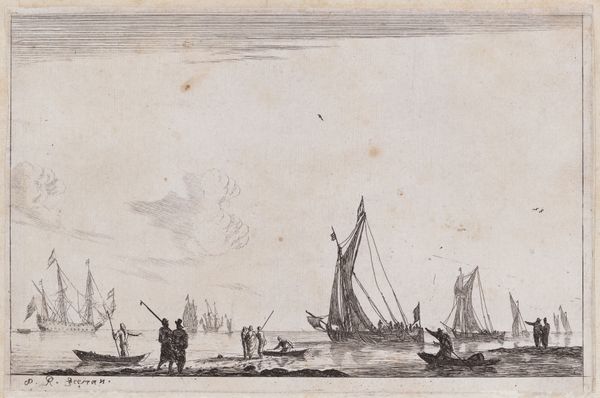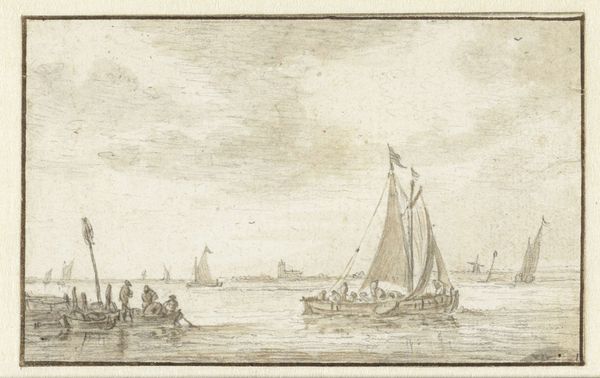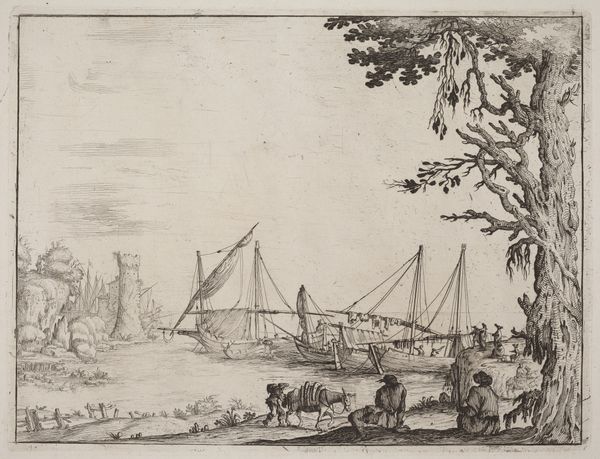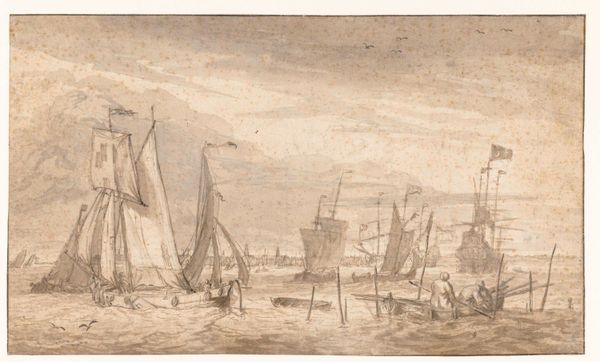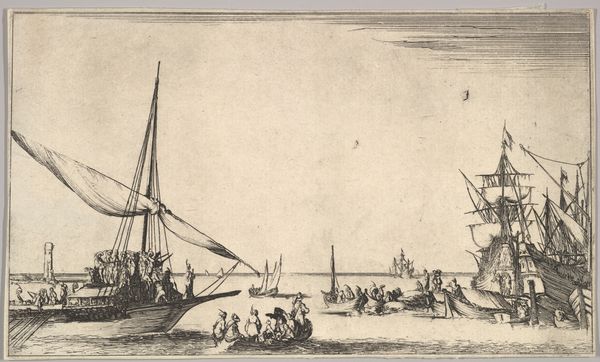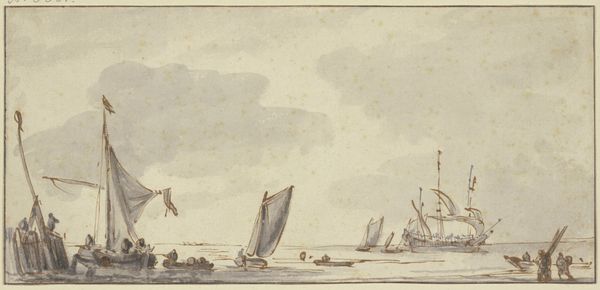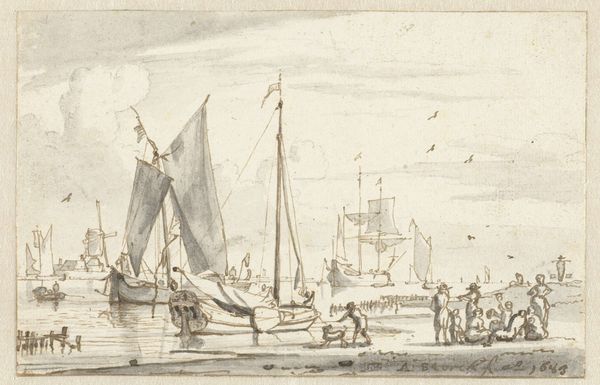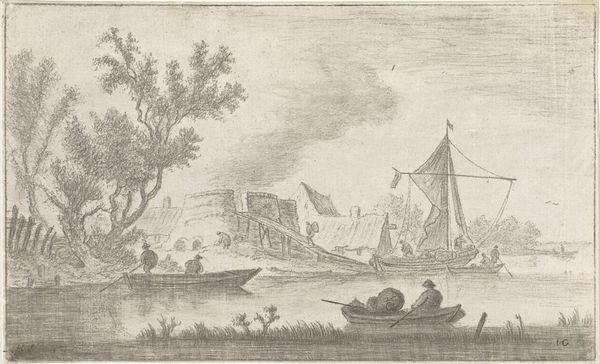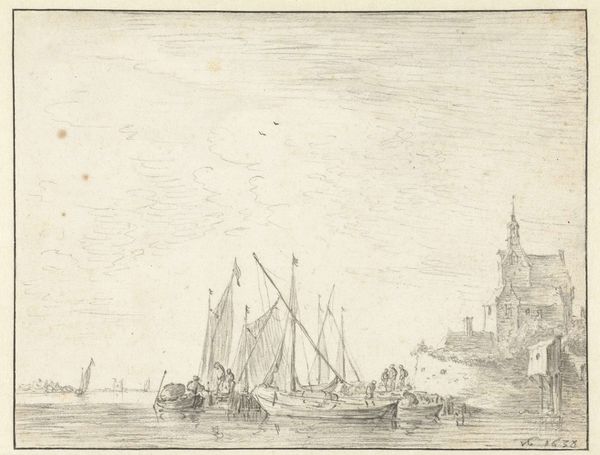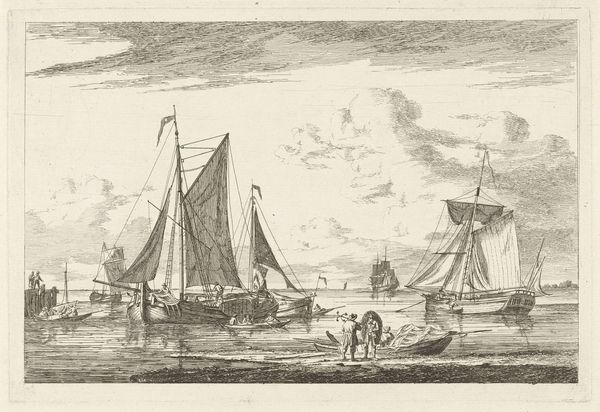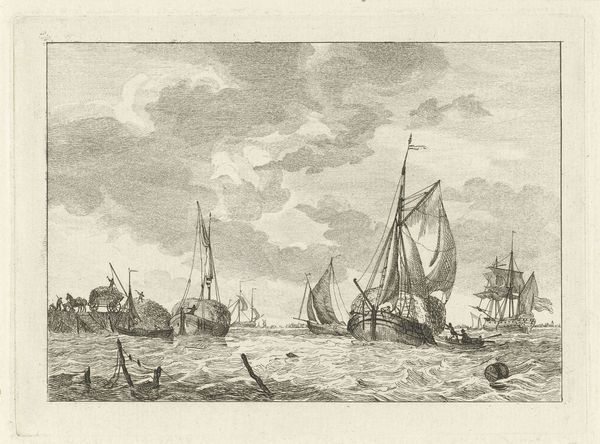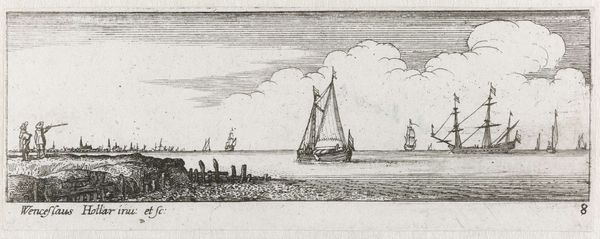
engraving
#
landscape
#
cityscape
#
genre-painting
#
engraving
Dimensions: height 167 mm, width 233 mm
Copyright: Rijks Museum: Open Domain
Editor: Here we have "River View" by N. de Vries, dating from 1800 to 1878. It’s an engraving, and the detail is just incredible! I’m initially struck by how much is happening—a real bustling scene. What catches your eye when you look at this piece? Curator: The activity indeed suggests trade. It’s an ordinary scene but rich with coded symbols: the boats, of course, signifying journeys, movement, but also conveyance, connection between disparate points. Note how many different kinds of boats there are. What do you make of the figures near the water’s edge in the foreground? Editor: They seem to be loading or unloading barrels onto a small boat. So, essential supplies, perhaps? I hadn’t really considered the varying shapes of the vessels before. Curator: Precisely. The size of the boats in relation to the figures indicates not only their economic activity but social structures. Are they merchants? Day laborers? Each craft bears witness to a way of life. Editor: I suppose each detail gives you a piece of the bigger picture, painting a history of trade. That one lone windmill is so characteristic of Dutch landscapes, right? Curator: The windmill does speak to cultural identity. In Dutch art, windmills are also about ingenuity and harnessing natural forces. This imagery underscores humanity’s imprint on the landscape. Editor: I can see now that these familiar sights symbolize a much broader scope of cultural, social, and economic symbolism woven together, expressing a collective history. Curator: Visual art provides this link, a way for these older archetypes to evolve and remain vital over time. I'm so glad we could reflect upon this.
Comments
No comments
Be the first to comment and join the conversation on the ultimate creative platform.
